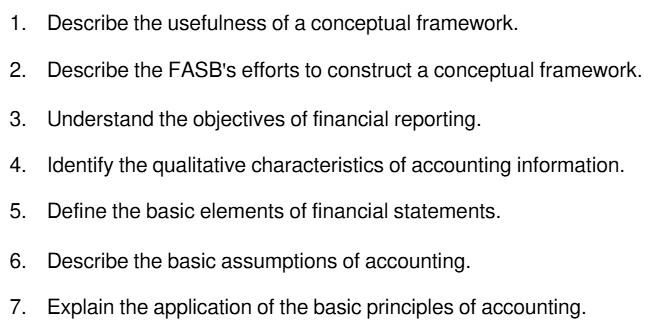Answered step by step
Verified Expert Solution
Question
1 Approved Answer
1. Describe the usefulness of a conceptual framework. 2. Describe the FASB's efforts to construct a conceptual framework. 3. Understand the objectives of financial

1. Describe the usefulness of a conceptual framework. 2. Describe the FASB's efforts to construct a conceptual framework. 3. Understand the objectives of financial reporting. 4. Identify the qualitative characteristics of accounting information. 5. Define the basic elements of financial statements. 6. Describe the basic assumptions of accounting. 7. Explain the application of the basic principles of accounting.
Step by Step Solution
There are 3 Steps involved in it
Step: 1
The rejection indicates a need for an answer focusing on conceptual frameworkrelated topics which are different from the initial focus on test bank up...
Get Instant Access to Expert-Tailored Solutions
See step-by-step solutions with expert insights and AI powered tools for academic success
Step: 2

Step: 3

Ace Your Homework with AI
Get the answers you need in no time with our AI-driven, step-by-step assistance
Get Started


